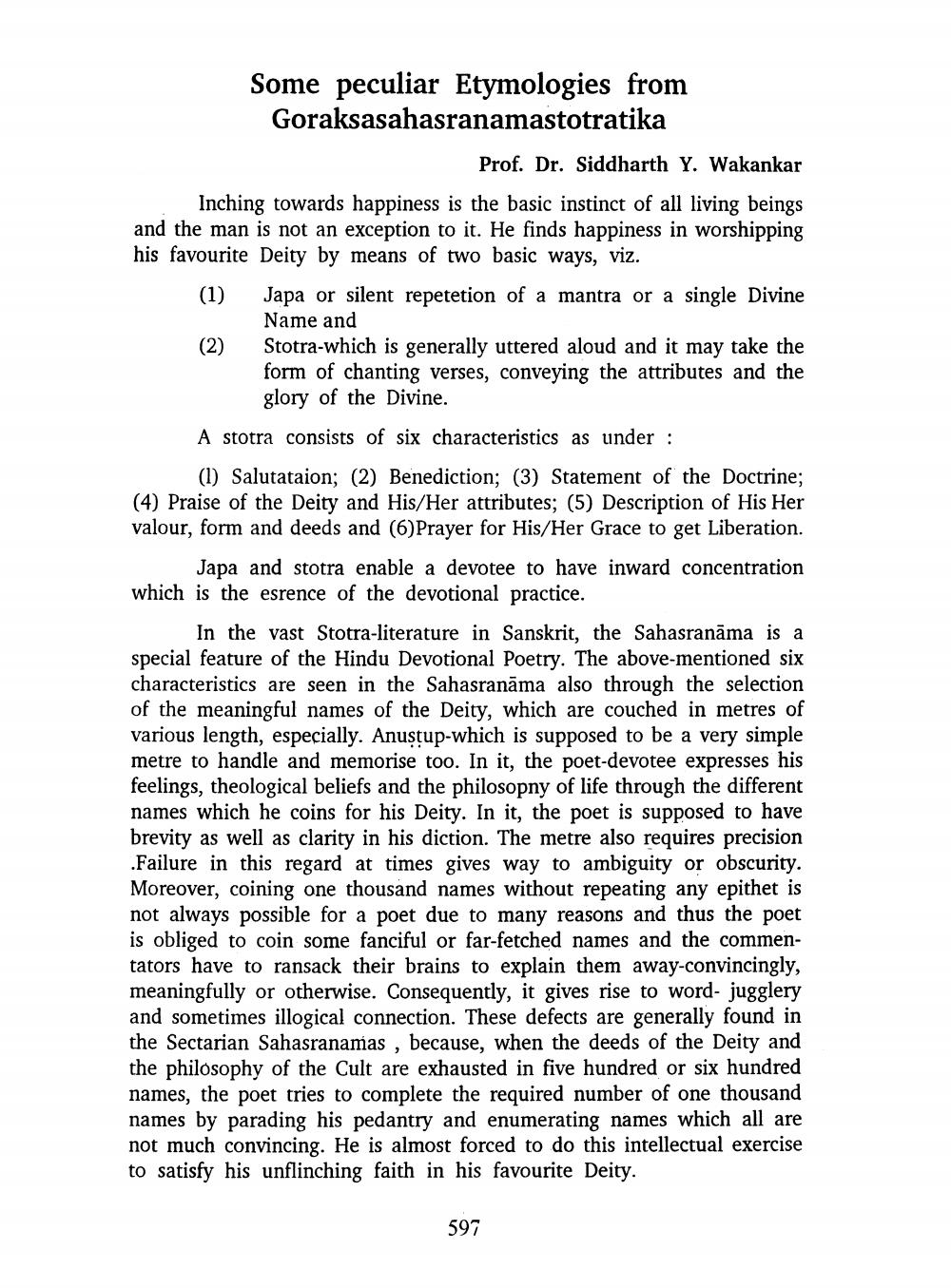________________
Some peculiar Etymologies from
(2)
Goraksasahasranamastotratika
Prof. Dr. Siddharth Y. Wakankar
Inching towards happiness is the basic instinct of all living beings and the man is not an exception to it. He finds happiness in worshipping his favourite Deity by means of two basic ways, viz.
(1)
Japa or silent repetetion of a mantra or a single Divine Name and
Stotra-which is generally uttered aloud and it may take the form of chanting verses, conveying the attributes and the glory of the Divine.
A stotra consists of six characteristics as under:
(1) Salutataion; (2) Benediction; (3) Statement of the Doctrine; (4) Praise of the Deity and His/Her attributes; (5) Description of His Her valour, form and deeds and (6) Prayer for His/Her Grace to get Liberation.
Japa and stotra enable a devotee to have inward concentration which is the esrence of the devotional practice.
In the vast Stotra-literature in Sanskrit, the Sahasranama is a special feature of the Hindu Devotional Poetry. The above-mentioned six characteristics are seen in the Sahasranama also through the selection of the meaningful names of the Deity, which are couched in metres of various length, especially. Anustup-which is supposed to be a very simple metre to handle and memorise too. In it, the poet-devotee expresses his feelings, theological beliefs and the philosopny of life through the different names which he coins for his Deity. In it, the poet is supposed to have brevity as well as clarity in his diction. The metre also requires precision .Failure in this regard at times gives way to ambiguity or obscurity. Moreover, coining one thousand names without repeating any epithet is not always possible for a poet due to many reasons and thus the poet is obliged to coin some fanciful or far-fetched names and the commentators have to ransack their brains to explain them away-convincingly, meaningfully or otherwise. Consequently, it gives rise to word- jugglery and sometimes illogical connection. These defects are generally found in the Sectarian Sahasranamas, because, when the deeds of the Deity and the philosophy of the Cult are exhausted in five hundred or six hundred names, the poet tries to complete the required number of one thousand names by parading his pedantry and enumerating names which all are not much convincing. He is almost forced to do this intellectual exercise to satisfy his unflinching faith in his favourite Deity.
597




